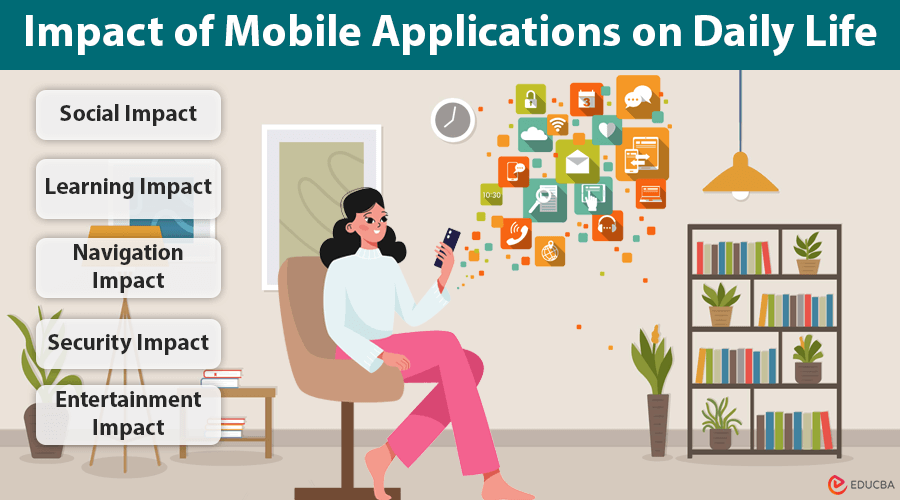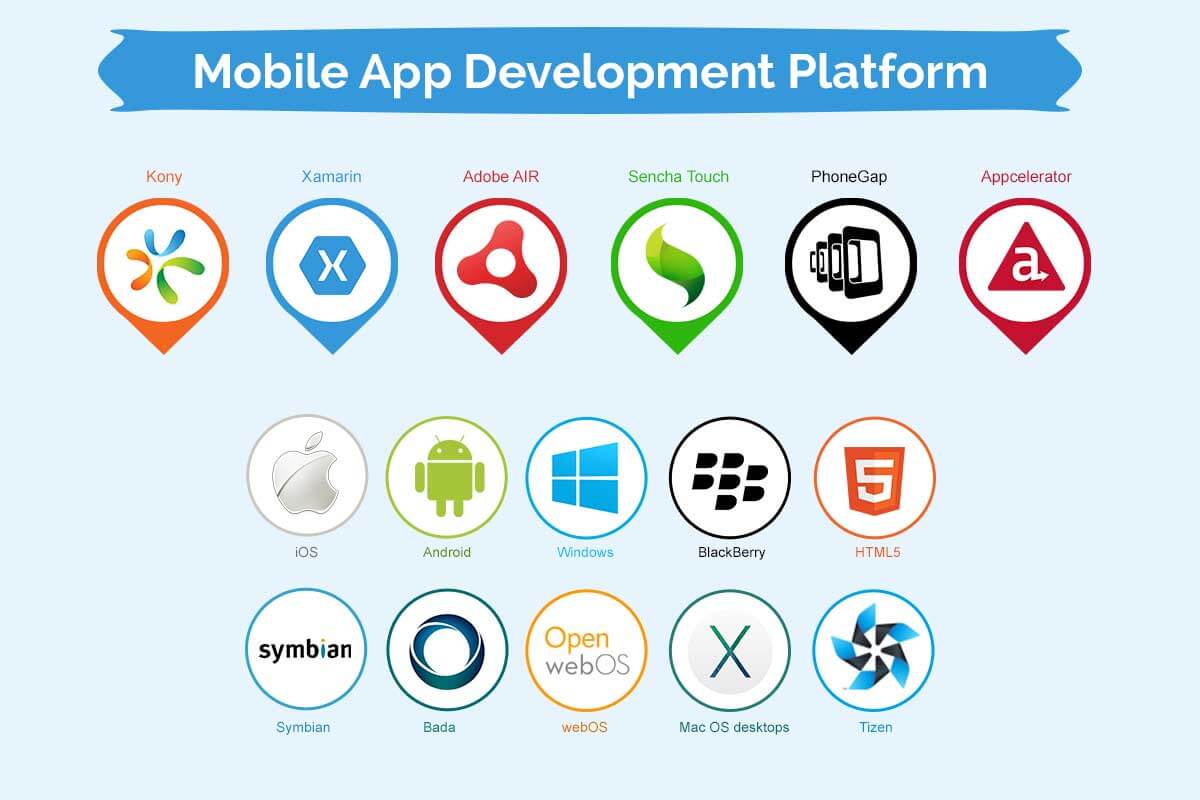
What are Mobile Applications?
The advent of smartphones in our daily lives has changed the dimensions of every aspect. The digital benchmark comes with the addition of innovations. The features of a smartphone are increasing, and its uses are crossing the boundaries. It is like a small compact world enclosed in an electronic gadget. Mobile applications have immense use in almost all activities, whether entertainment or business. With access to the internet, the entire knowledge pool is right at our fingertips. Access to the knowledge pool and organizing the activities of our daily life has been made effortless via the introduction of smart mobile applications.
Impact of Mobile Applications on Daily Life
Mobile applications have changed the use of smartphones. The days when smartphones were thought of as unnecessary luxuries are gone. The bliss of the technical benchmark impacts every single day. It is hard to think of a single day without mobile applications now. The app revolution is making the world smaller and within reach of everyone. The application development aims to create something people can find handy, redefining how we looked at the same thing before.
1. Social Impact
Social media applications are helping us to keep in touch with our near and dear ones. It is not always possible to call everyone. Social media apps alert us about the current activities of our friends and families, keeping us on the same page. We share our experiences, snapshots, and videos with everyone. In fact, with these social apps, communication has become faster and more effective.
2. Learning Impact
The most powerful thing in this world is information. It can be of any matter. The endless pool of knowledge fits in our pockets as an electronic miracle. We can easily learn more about our interests, follow an event, check out the latest trends, or search for anything unknown. The introduction of knowledge-based applications has changed the entire picture of consuming information. The prospect of the learning dimension via the applications is unlimited.
3. Navigation Impact
Another added advantage of the application is that we can travel anywhere without the fear of losing our way with the help of navigational applications. Learning about the facts of a location is quite easy via trip-based apps. The reviews and feedback tell us about a place’s pros and cons, which helps us decide. Satellite navigation has made it even smoother, and voice-guided navigation is like a compass making the journey easier.
4. Security Impact
The smarter the phones become with their applications, the greater the risk of getting hacked for personal information. Security applications protect the sensitive data present in smartphones. The information can be related to bank transactions, email, and password security. Therefore, the applications stop illegally trespassing on spyware intending to steal information by properly encrypting the data. Other applications allow users to monitor with the help of a camera or an audio device remotely.
5. Entertainment Impact
The pocket-size entertainment device gives us access to our favorite audio, videos, and games whenever and wherever we want. We can access the huge database of entertainment platforms with the help of applications.
Mobile Applications in Business
The use of mobile applications in business is at an exponential rate. Every day new applications with innovative ideas are for the benefit of smartphone users. This platform is very prospective as a mobile application in business. But before indulging in developing one, you need to consider certain parameters to ensure proper usability and investment of resources fruitfully.
1. The Issue of Control
Mobile applications in business can be developed by an in-house development team or outsourced to an application development company. The outsourced way is way more cost-effective in the development and management stage than the in-house production. But there lies a factor of control over the application development process and after-development management. But the degree of control over the development process is less in the case of the external entity. You can only monitor the progress of the process but cannot intervene all the time or control the grounds. This can be a problem in the future too.
For better convenience of mobile applications in business, the team can give you a better degree of freedom to control the outcome and manage the after-development phase properly. Better control can have a better outcome depending on your expertise. The answer lies in the budgetary concerns and the feasibility of the application you want to develop. The direction of the progress can be easily monitored when the project is under the same roof. Moreover, the in-house team knows what you want to develop. The pros and cons can be covered accordingly. Explaining the entire plan to an external entity is also tough. The plan must be transparent for the benefit of both parties. It also ensures the proper execution of the project.
2. Budgetary Concerns and Cost Association
The second question that comes to mind is the budget set to back up the application development plan. The application development segment differs from other businesses as getting an estimate beforehand is difficult. The difficulty increases with the number of variables associated with the process. The number of variables is dynamic and changes in due course of time. So developing an estimate is tougher than it looks. But on the other hand, getting an idea of the development cost helps you prioritize the important factors. A developer can also work accordingly with the given budget format and guide you till the end of the project based on the degree of importance of the variables to be covered.
The crucial features can be taken care of at the beginning of the smooth ongoing development process. The important items will be completed first, and priority-based grounds will be covered. The estimates are only accurate when the project information is well-researched and clear.
On the other hand, have you decided whether you will charge the users or not? The development, after all, is a part of the business that you aim to flourish. It depends on the strategy you want to follow. You have to decide whether your application will be free to download, require a subscription to use, features to be unlocked via paying charges, in-app purchases, or incorporated app advertising. The monetization plan must be ready, and then the development must roll on to make the venture fruitful.
3. Which mobile application platform? How much competition?
The number of smartphone and tablet users is increasing exponentially daily, and so is the market for mobile applications. When choosing the right mobile application platform, the multilevel application development choices are very confusing. The challenge of device fragmentation in the initial phase must be handled first to segregate the target volume. The traffic must be analyzed to check their preferences for the devices and mobile applications platform, and then the respective apps can be developed. The more traffic you have in the targeted segment, the better the chances of good returns. Thus, the decision regarding mobile applications platform, type of device, language for development, and functionality should be taken care of to provide more value to the audience. As the competition is higher, any flaw can be tolerated, which might demean the app’s popularity.
The second question in this aspect is about the competition. Before indulging in any type of investment, act smart and do your homework. Check the competition level you will face in the same segment as your target app development. Learn the features the existing applications provide and figure out the crucial ones. Users always seek different and better applications. Plan to add better features that are innovative and more interactive with the users. Thus, research the most popular platform and competition properly and add more solutions to the users’ problems.
4. The Question of Functionality, Traffic Handling, and Customer-Oriented Section
The focus is the main key to setting the functionality of the application. After the development process and the mobile application platform on which the app will be developed is identified and decided, the team must consider the degree of functions the application will avail the users. The application functionality depends on the genre of the business. Too many features can ruin the usability and complicate the user interface. You must decide what features to incorporate for better navigability and user-friendly ambiance. When the plan is complex, moving on with more than one application development is better than messing up the situation.
How much traffic volume an application can handle should be set earlier. With the increase in popularity, the volume will increase, and the application must be capable of handling the pressure. The app must have backend systems and integrated pre-existing infrastructure to prevent bottleneck situations of user overload. If the application is of the e-commerce genre, then the volume of visits must be tackled with caution. The additional traffic inflow can be crucial for the applications. Moreover, the system must be very much secure to handle the transaction volume in a proper way.
Every application must incorporate a section where the customers can interact with the support system for better usability. Having a feedback platform can help the betterment process of the application. The users will find it more interactive when they see their requests have been on the radar. The user interaction interface adds value to the brand and works as a medium to learn what the users want.
5. Is the visual mobile application design and wireframe ready?
Wireframes are the ways to determine the experience and interaction of a user with the application. The things related to wireframes must be the vet by a technically strong expert to ensure a good experience from the user’s end. You have to check whether the wireframes compatibility with the targeted mobile applications platform for launching the app.
The question of user-app interaction is the most important one to consider. The visual mobile application design is what users will see when using it on their respective platforms. The application will run properly without any glitches or deformation before launching. The development must be such that the test run shows good results and a promising future. Visual communication is what a user will get to see at first sight. The mobile application design should be attractive and interactive. The visual mobile application design will choose colors and designs accordingly to increase the visual communication factor and engage users more.
The mobile application’s design is representative of your services to the users. That is why a proper logo, colors, and elegant fonts are very important for the brand image. Establishing a brand in the mind of the users is very important. Mobile applications design your logo, remembering the name you have thought for the application. Hence, a mobile application design has a catchy name and lucrative colors, creates an impression in the mind of the users, and makes the promotions easier and more effective.
Wrapping up the Context
Before developing an app, the five questions are important. The equations are quite simple. The application is the medium the customer will find out about your services. It is like a shop and needs better presentation and care. Finally, fit yourself into the targeted customer’s shoes and discover what features you want in the app. Thus, the better features you can provide increase the chances of success in cutting-edge competition.
Related Articles
This is a guide to Mobile Applications that have changed the use of smartphones. Here we have discussed mobile applications in business along with design and platform.



